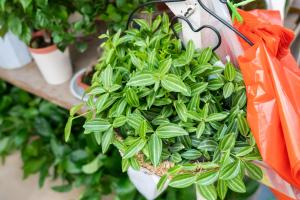How Does Water Availability Affect Plant Species Distribution
Water is an essential resource for plant growth and survival. The availability of water can have a major impact on the distribution of plant species. In regions with low rainfall or limited access to water, plant species that have adapted to these conditions will typically dominate the ecosystem. Conversely, areas with consistent and abundant rainfall will host a diverse range of plant species that have evolved to thrive in wetter environments.
The Role of Water in Plant Growth
Water is essential for many of the processes that occur in plants. Without adequate water, photosynthesis, the process by which plants convert sunlight into energy, cannot occur. Water also helps to transport nutrients and minerals from the soil to the plant. In addition, water provides structural support to the plant, helping to maintain its shape and prevent it from wilting.
Plants Adapt to Water Availability
Plants have evolved a range of adaptations to help them survive in environments with limited water. For example, succulent plants, such as cacti, are able to store water in their leaves and stems, allowing them to survive for long periods without rainfall. Plants that live in areas with infrequent rainfall may have roots that are large and shallow, allowing them to quickly absorb water from the soil when it does rain. Other plants have developed the ability to close their stomata, small openings on their leaves through which they take in carbon dioxide and release oxygen, to reduce water loss through transpiration.
Water Availability and Plant Species Distribution
Water availability plays a critical role in determining the distribution of plant species. In areas with limited access to water, plants that are adapted to these conditions, such as succulents and other drought-tolerant species, will typically dominate the ecosystem. This is why desert regions are primarily populated by cacti, succulents, and other plants that are adapted to low-water conditions.
In areas with high levels of rainfall, the ecosystem may be much more diverse. The rainforest, for example, is home to a vast array of plant species, many of which are adapted to the wet conditions of the ecosystem. These plants often have large leaves and other adaptations that allow them to thrive in high-moisture environments. Wetlands are also similarly dense with plant species.
The Impact of Human Activity on Water Availability
Human activity can have a significant impact on water availability and, in turn, on the distribution of plant species. Deforestation, for example, can significantly reduce the amount of moisture in an ecosystem, negatively impacting plant species that have evolved to thrive in these conditions. Similarly, pollution can contaminate water sources, making it difficult for plants to access the water they need to survive.
Conclusion
The availability of water is a critical factor in determining the distribution of plant species. Plants that have evolved to thrive in low-water environments will dominate in regions with limited rainfall or access to water. Conversely, areas with consistent rainfall will host a diverse range of plant species adapted to wetter conditions. Human activity can significantly impact water availability, which can negatively impact plant species and throw ecosystems out of balance.

 how many times do yo...
how many times do yo... how many planted tre...
how many planted tre... how many pine trees ...
how many pine trees ... how many pecan trees...
how many pecan trees... how many plants comp...
how many plants comp... how many plants can ...
how many plants can ... how many plants and ...
how many plants and ... how many pepper plan...
how many pepper plan...





























